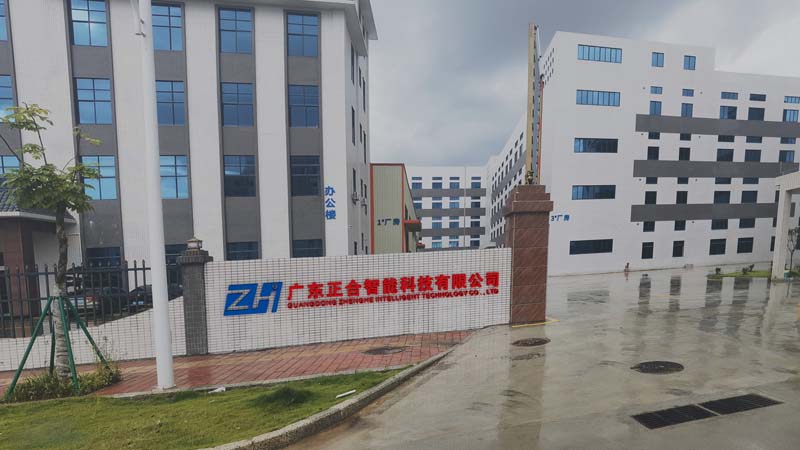Technological Innovation in Flexible Electric Heaters: High-Temperature Substrates and 3D Printing Leading Customized Production
In today's era of rapid technological advancement, industrial manufacturing is undergoing an unprecedented transformation. As a vital segment in the industrial heating field, flexible electric heaters have become indispensable across industries such as modern manufacturing, healthcare, aerospace, and automotive electronics, thanks to their superior performance and wide-ranging applications.
With the deep integration of high-temperature-resistant substrates and 3D printing technology, flexible electric heaters are stepping into a new era of intelligence and customization, ushering in a global wave of technological revolution.

The Prelude to Transformation: The Rise of Flexible Electric Heaters
Flexible electric heaters, renowned for their lightweight flexibility, uniform heating, high efficiency, and adaptability, have stood out amidst traditional rigid heating elements since their inception. Whether ensuring constant temperatures in medical devices, heating batteries in new energy vehicles, or providing precise thermal control in aerospace applications, flexible electric heaters meet complex operational demands with their versatile characteristics.
However, as application scenarios diversify, the market demands higher performance, greater durability, and advanced customization. This has driven dual breakthroughs in material science and manufacturing processes.
High-Temperature Substrates: The Foundation of Superior Performance
Materials have always been the cornerstone of technological ceilings. The development history of flexible electric heaters is, in essence, a chronicle of material innovation.
Early flexible heaters used standard rubber or PVC substrates, which, while flexible, lacked the heat resistance, corrosion resistance, and stability required for high-end industrial applications. The advent of advanced materials like Polyimide (PI), silicone, and PTFE (polytetrafluoroethylene) revolutionized the industry, breathing new life into flexible heating solutions.
Polyimide films, with their exceptional heat resistance, insulation, and mechanical strength, became the material of choice for premium flexible heaters. Silicone, known for its softness and eco-friendly properties, enhanced product safety and adaptability. PTFE offered unparalleled chemical resistance, ensuring stability even in extreme environments.
These advanced substrates not only extended the durability and performance limits of flexible electric heaters but also broadened their application landscape, providing robust solutions for high-precision temperature control needs.
3D Printing Empowerment: Ushering in a New Era of Custom Production
If high-temperature substrates laid the groundwork for performance, the introduction of 3D printing technology has revolutionized the production model of flexible electric heaters.
Traditional manufacturing, constrained by molds, processes, and mass production requirements, struggled to meet the growing demand for small-batch, diverse, and complex customized solutions. 3D printing (additive manufacturing) shattered these limitations with its design flexibility, rapid prototyping, material efficiency, and cost advantages.
With 3D printing, companies can swiftly tailor flexible electric heaters to specific client requirements, optimizing structures and integrating functions. Whether adhering to irregular surfaces or designing intricate heating patterns on curved forms, 3D printing delivers precision and performance enhancements.
Moreover, the synergy between 3D printing and smart manufacturing systems has made production more intelligent and automated, achieving seamless management from design to manufacturing and inspection. This marks the true dawn of customized and flexible production.
A Blue Ocean Market: Industrial Ecosystem and Future Trends
According to authoritative data, the global flexible electric heater market is growing at an annual rate exceeding 8%, projected to surpass USD 10 billion within the next five years. As a manufacturing powerhouse, China is emerging as a pivotal hub for flexible heating technology, backed by a comprehensive industrial chain and strong R&D capabilities.
The continuous expansion of downstream applications—especially in new energy, smart wearables, healthcare, and industrial automation—fuels the industry's robust growth. With sustainability and energy efficiency becoming industry imperatives, flexible heating technology plays a vital role in energy conservation and emission reduction.
Yet, amidst this vast market potential, challenges remain: enhancing thermal conductivity and efficiency, integrating intelligent control and remote monitoring, and balancing high performance with cost-effective, scalable production. These are the focal points for enterprises and research institutions striving for breakthroughs.
The Convergence of Technology and Intelligence: The Future Is Now
Looking ahead, the evolution of flexible electric heater technology will follow several key trends:
Intelligence: Integration with IoT and sensor technologies for smart temperature control and remote monitoring.
Energy Efficiency & Sustainability: Development of more efficient heating materials and eco-friendly designs.
Integration: Seamless incorporation with electronic components and sensors to expand functional capabilities.
Standardization & Customization: Balancing standardized production with personalized, diversified demands.
This is not merely a technological upgrade but a profound shift in manufacturing philosophy—where innovation, materials, and intelligence harmonize.
Corporate Excellence: ZH’s Global Vision and Smart Manufacturing Strength
Amidst this wave of technological innovation in flexible electric heating, numerous enterprises are forging ahead, driven by strong R&D capabilities and acute market insight. Among them, Guangdong Zhenghe Intelligent Technology Co., Ltd. (ZH) has garnered widespread attention for its outstanding achievements in automation and intelligent manufacturing.

Since its establishment in 2020, ZH has been deeply rooted in the fields of automated electric heating component machinery and intelligent assembly lines. With a modern, standardized large-scale factory in Guangdong’s Zicheng Industrial Park, ZH has built an efficient and precise production system.
Its elite R&D team continuously pioneers advancements in automation, intelligent manufacturing, and robotics, ensuring that ZH remains at the forefront of technological progress.
Thanks to high-quality products and innovative solutions, ZH has expanded its footprint globally, exporting to countries such as Turkey, India, Russia, Brazil, the United States, Mexico, Japan, and Thailand—demonstrating the strength and reputation of "Made in China."
Committed to innovation as its core driving force, ZH not only meets current customer needs but aspires to lead future industry development. As the world moves towards a smarter, more efficient, and greener industrial era, ZH is partnering with global collaborators to craft a grand vision for intelligent manufacturing.
On the journey of technological innovation in flexible electric heaters, progress is relentless, and innovation knows no bounds. With the continuous advancement of high-temperature substrates and 3D printing applications, the industry is poised to unlock vast new horizons.
Enterprises like ZH, equipped with foresight and technological prowess, are destined to shine brightly in this wave of transformation, writing new chapters of excellence in the era of intelligent manufacturing.

